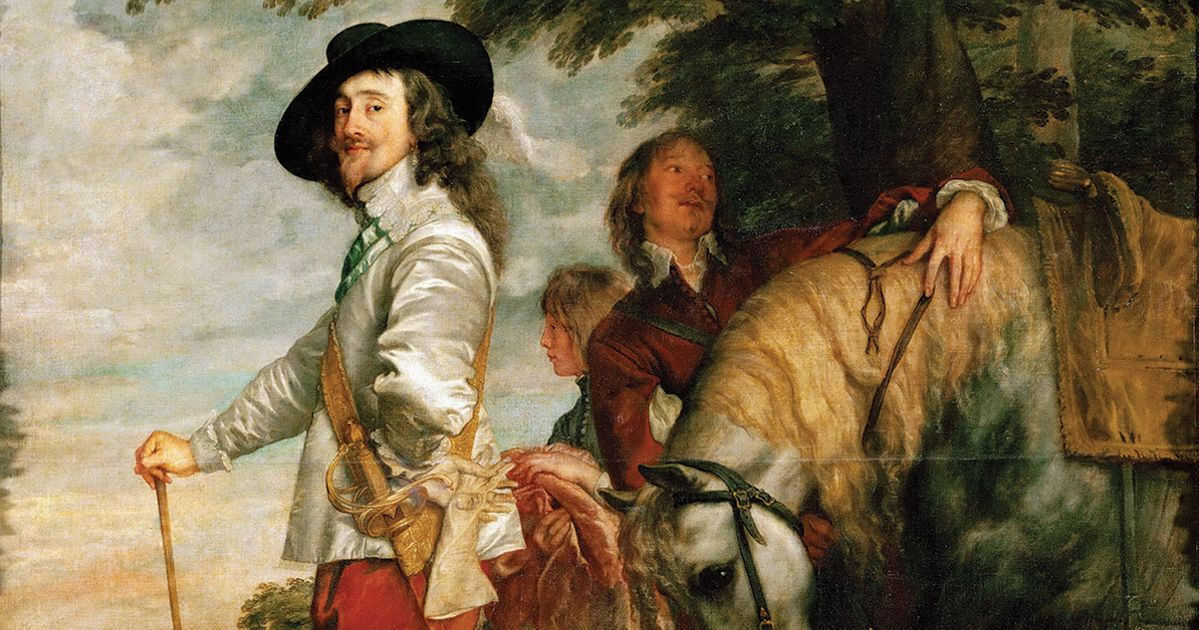
Christopher White’s interest in Anthony van Dyck dates back to a lecture by Oliver Millar at the Courtauld Institute in the summer of 1951. The fruits of 70 years of study have now been published in an elegant monograph on Van Dyck’s portraits. In many ways, this is a refreshingly old-fashioned book, a volume that looks back to a type of comprehensive art history championed in the UK by, for example, Kenneth Clark and Anthony Blunt, followed by Roy Strong and Nicholas Penny. While the scholarship on Van Dyck has been rather all-encompassing in the past few decades, this is a welcome “general book of appreciation of his portraits”, as the author sets out.
White acknowledges that his book studies “only half” of Van Dyck’s “soul”. Yet the book sets the painter’s portraits within a much broader context. At the beginning, White compares Van Dyck’s first known self-portrait with those of Dürer and Rubens. Throughout the book, the Flemish artist’s production in the field of portraiture is compared with his contemporaries, both those he knew and those he is likely never to have met: Rubens above all—“the man who had cast so much light and shadow over Van Dyck’s career”—and Rembrandt, Frans Hals, Jordaens, Philippe de Champaigne and Velázquez. White also looks back to the painter’s role models: from Titian to Giovanni Battista Moroni, from Hans Holbein to Paolo Veronese.
Each portrait that is discussed by the author is set within its broader context, historical, geographical and social. Reading the book enlightens the reader on the social networks of aristocrats and connoisseurs across Europe in the first half of the 17th century. Van Dyck’s career is aptly described as “restless” and the reader cannot help but race alongside Van Dyck in his meteoric and short career (he was active as a painter for less than three decades).
The reader cannot help but race alongside Van Dyck in his meteoric and short career
The book is effortlessly divided into four chapters, following the main steps of Van Dyck’s life: from “The Early Years: Antwerp and London” (from his birth in 1599 and the beginning of his career around 1613 to 1621), to “The Journey to Italy: Genoa, Rome and Palermo”, charting the six years he spent in Italy, back to his homeland “Antwerp, Brussels and The Hague” between 1627 and 1632, and finally the last decade of his life, “The Late Years in London”. As simplistic as this division may seem, it is the unsurpassed way to understand the development of Van Dyck’s art.
Each chapter represents one of four acts of a play, or an opera, dedicated to one of the greatest and most exhilarating portraitists of the early modern age. It is not surprising that White refers to music in his book: in the Lomellini family portrait, painted in Genoa around 1626, “there is an element of grand opera —reminiscent of Bellini or Donizetti—as the dramatis personae stand and deliver their performance in this august hall”. White has judiciously chosen to focus on a selection of Van Dyck’s portraits. This is not a catalogue raisonné but rather an anthology of the most representative portraits to navigate the painter’s career and patrons. The writing is, like Van Dyck’s art, elegant and suggestive. Most of the portraits are concisely and effectively described: Charles I in the Hunting-Field is “the most romantic image of the king that exists”, while the picture of François Langlois “has the distinction of being the only portrait by Van Dyck in which the teeth can be made out”.
The final chapter is also the grandest, focusing on Van Dyck’s glorious period as “principalle Paynter in ordinary to their Majesties”, the unsurpassed witness of the court of Charles I and of an aristocratic generation on the edge of the Civil War’s precipice. As the book opens with a self-portrait, it concludes with Van Dyck’s last known image of himself, where “it would be difficult to find a more eloquent demonstration of the ability of the moustache to convey the mental and physical health of the sitter”. We take leave of this extraordinary portraitist paying homage to “the nervous, refined susceptibilities of a highly strung greyhound”.
Christopher White, Anthony Van Dyck and the Art of Portraiture, Modern Art Press, in association with Yale University Press, 350pp, £35 (hb)
• Xavier F. Salomon is the deputy director and chief curator of the Frick Collection, New York
Source link : https://www.theartnewspaper.com/review/van-dyck-s-grand-opera












